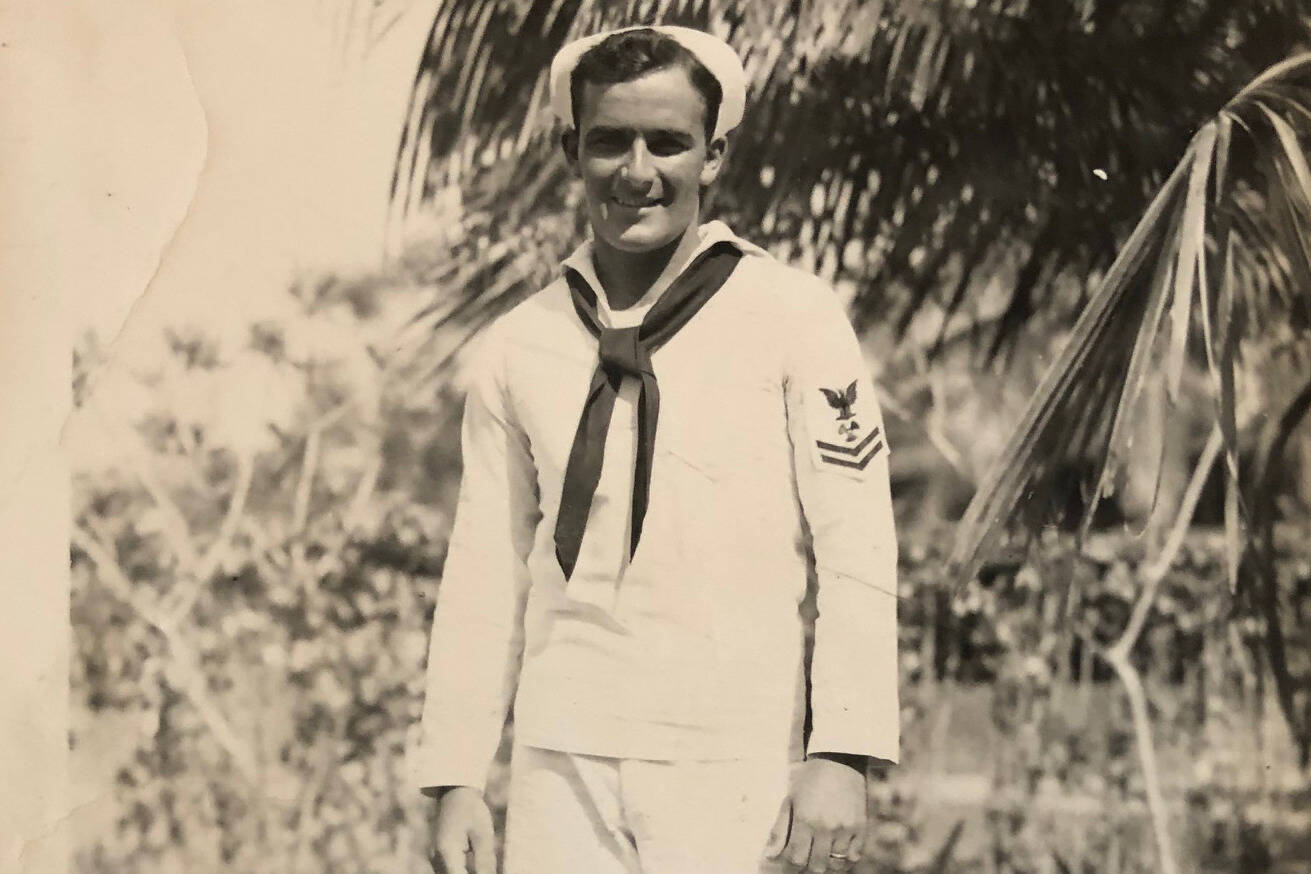A longtime resident of Hoonah and veteran of World War II will enter the ranks of another select group today, as he turns 100.
James J. Carey, who first moved to Hoonah from the East Coast in 1978, has spent nearly half a century in Alaska, said his daughter Donna Austin, who now lives with Carey in the Southeast Alaska village of about 800.
Carey originally grew up in Whitman, Massachusetts, Austin said. Whitman is a town about 20 miles south of Boston.
“He went to school there. His fondest memories from school was drawing and baseball,” Austin said in a phone interview. “During high school he really excelled as a catcher.”
[Boarding school summit to address generational trauma]
Baseball and art would continue to play big roles throughout Carey’s life, Austin said, but when Carey graduated from school, the world was descending into conflict as WWII began. Carey also married his high school sweetheart, Victoria, at this time, Austin said.
“He graduated in 1940 and joined the Navy in 1941. He chose diesel mechanic as his activity,” Austin said. “The best thing he liked about that time was when he wasn’t working on the boats, he was playing baseball.”
After getting out of the Navy after the war, Carey returned to Massachusetts, moving to his wife’s hometown, going to school for art, and getting a job at a company that made industrial light fixtures, Austin said. That process, which involved using furnaces to bake porcelain enamel onto steel, would inform Carey’s art, where he’d use a similar process to create art for churches in the Northeast.
“He got flying lessons in exchange for painting a picture of a flight instructors plane. He enjoyed piloting small four-seater airplanes all around the area he lived for years,” Austin said. “He was a great dad. He taught us all to play baseball.”
Some examples of his art ended up in museums in that area, Austin said, including the Smithsonian and the Baltimore Museum of Art.
After working for General Dynamics Shipbuilding for some years as a senior technical illustrator, Carey retired in 1978 and moved to Alaska to start a cattle farm near Hoonah, known as the Game Creek Farm Community.
“He built his home here in the 1980s. He did many chores, responsibilities, projects just to bless the community,” Austin said. “He was very busy.”
Carey also found a new way to create art as he used the bounty of Alaska’s wilderness.
“He painted Alaskan pictures on the bear breads with octopus ink. He took it from the octopus that got caught in the nets,” Austin said. “His bear breads sold in Hoonah, Juneau and Skagway.”
Carey lived in the house he built, surviving his wife Victoria who died in 1994, Austin said. He recently moved in with Austin, who has also lived and worked in Hoonah since moving there in 1979.
“He lived at home and kept his home in order till he moved in with me only to conserve firewood,” Austin said. “He was very inspirational throughout his life.”
While declining health prevents Carey from getting out, or speaking to the Empire for this article, Austin said, she remembers his life with fondness as it stretches past the century mark.
“He whistled a lot. He played the guitar and the harmonica. He sang with a beautiful tenor voice. He was extremely funny,” Austin said. “He’s a patient and peaceful man. He’s grateful to god that he’s still alive.”
Rarefied air
Just how rare is it to make it to 100?
Multiple international outlets have attempted to answer the question and determined a lot is impacted by your year of birth.
According to the Guardian’s data blog, someone born in the United Kingdom in 1922 had about a 1.6% chance of living to 100. While someone born in 2011 had about a 30% chance of hitting the mark, based on data and estimates from U.K.-based agencies.
There are about 1.73 centenarians per 10,000 people in the U.S., according to Discover the Odds. Japan had about twice as many at 3.43 per 10,000 and led developed countries.
It’s slightly less common than the national average to live to 100 or older in Alaska, according to state data.
According to state demographer David Howell, 103 Alaskans aged 100 or older applied for the Permanent Fund Dividend in 2021. With a population of about 734,300, according to state data, there are about 1.4 people 100 or older in Alaska per 10,000 people.
• Contact reporter Michael S. Lockett at (757) 621-1197 or mlockett@juneauempire.com.

